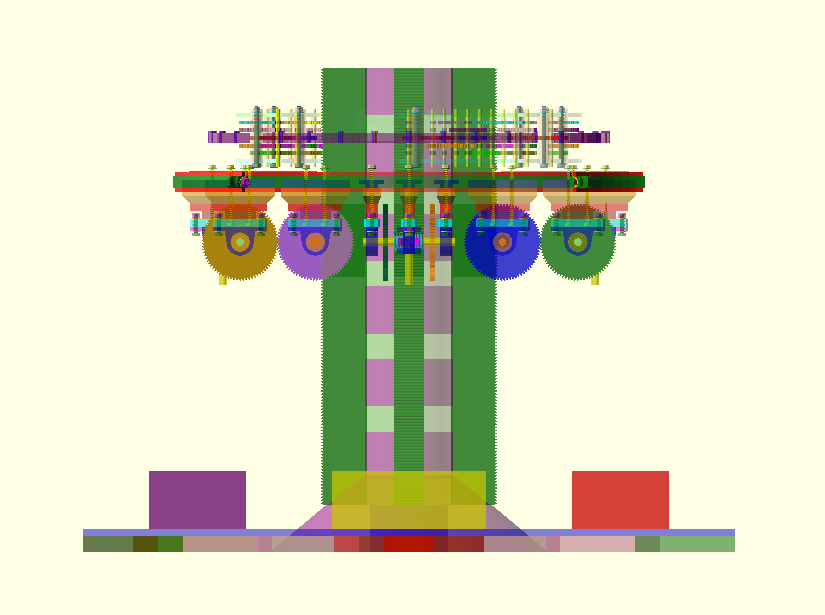System Architecture
The Decadeau Cell is a vertically structured gravito-electromechanical system. Its function is based on the controlled descent of a mass-bearing platform that transmits torque through rack and pinion gearing into a series of reduction gear assemblies, culminating in rotational motion of a magnetic rotor surrounding an inductive coil array.
This configuration enables direct conversion of gravitational potential into usable electricity with minimal environmental dependence and high mechanical visibility.

